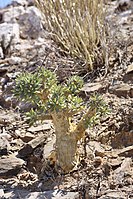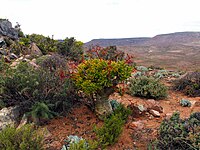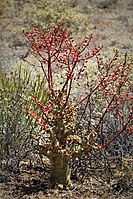| Tylecodon paniculatus | |
|---|---|
 | |
| Tylecodon paniculatus in Rooiberg Nature Reserve, South Africa. | |
| Scientific classification | |
| Kingdom: | Plantae |
| Clade: | Tracheophytes |
| Clade: | Angiosperms |
| Clade: | Eudicots |
| Order: | Saxifragales |
| Family: | Crassulaceae |
| Genus: | Tylecodon |
| Species: | T. paniculatus |
| Binomial name | |
| Tylecodon paniculatus | |
| Synonyms | |
| |
Tylecodon paniculatus, also known as butter bush, butter tree, butterboom or rooisuikerblom (Afrikaans), is a species of succulent plant in the genus Tylecodon belonging to the family Crassulaceae. [1]




